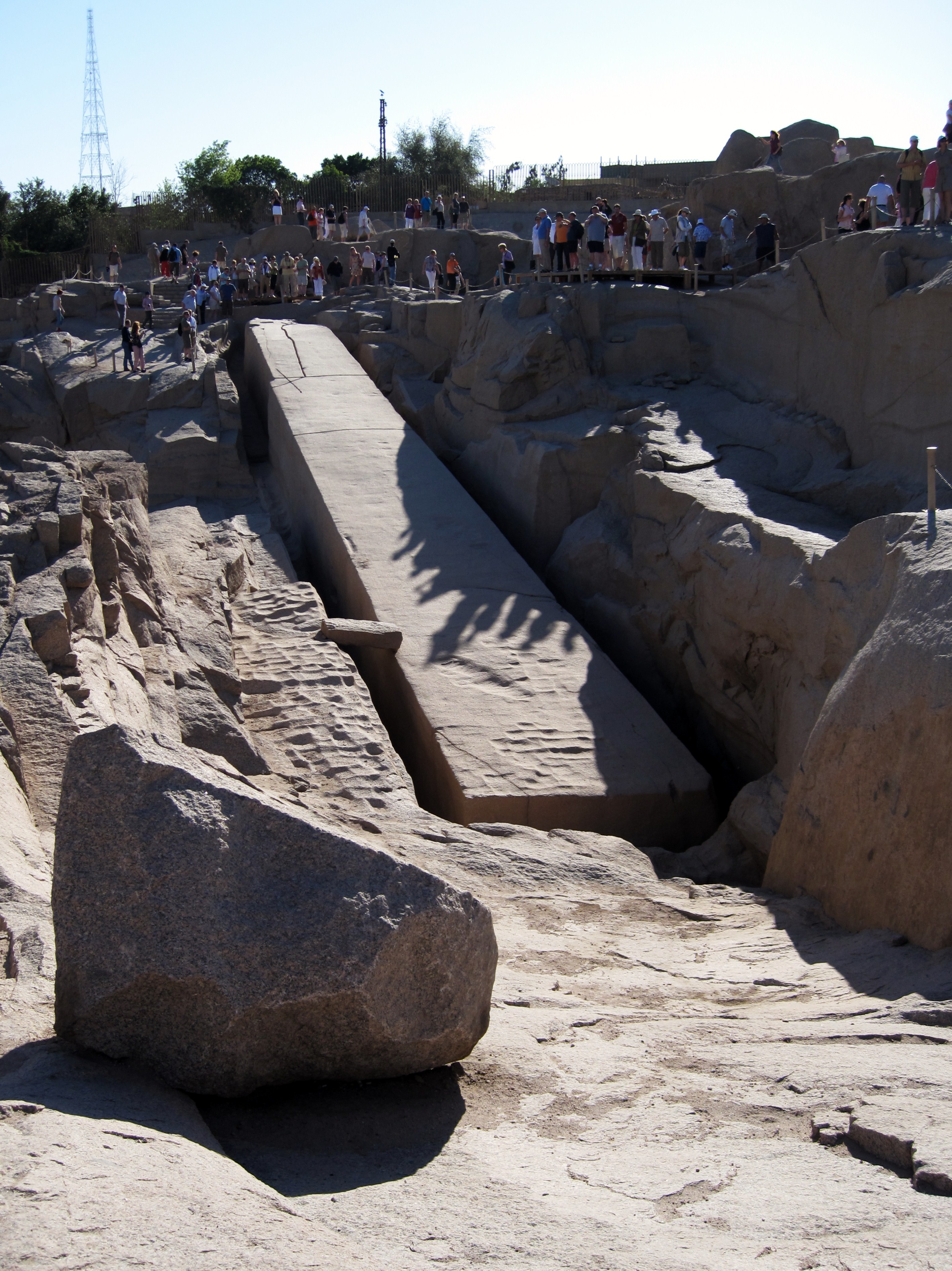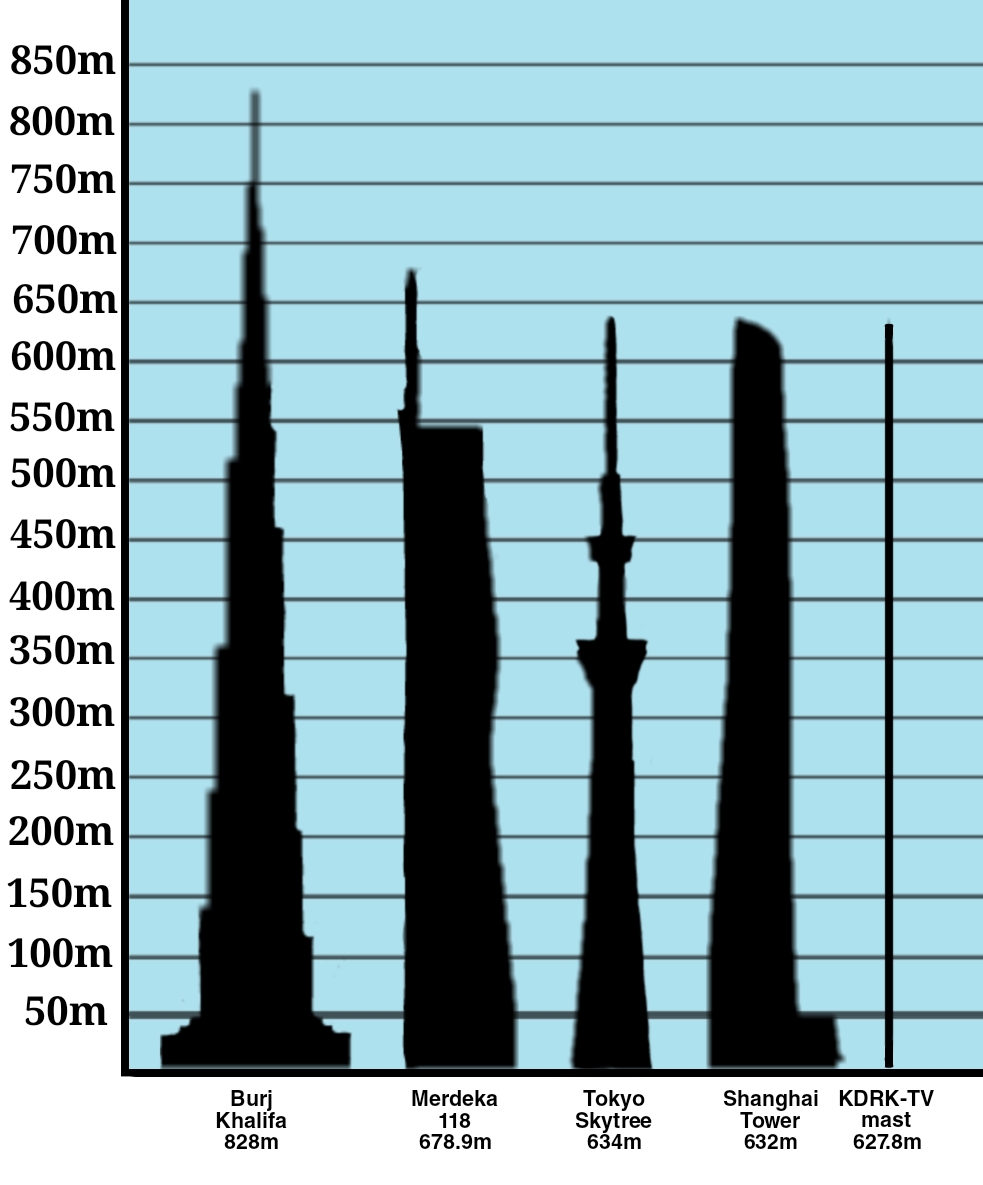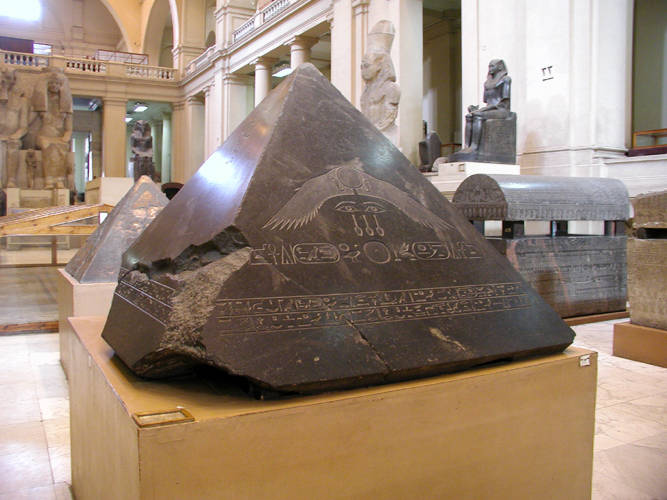|
Red Pyramid
The Red Pyramid, also called the North Pyramid, is the largest of the pyramids located at the Dahshur necropolis in Cairo, Egypt. Named for the rusty reddish hue of its red limestone stones, it is also the third largest Egyptian pyramid, after those of Khufu and Khafre at Giza. It is also believed to be Egypt's first successful attempt at constructing a "true" smooth-sided pyramid. Local residents refer to the Red Pyramid as ''el-heram el-watwaat'', meaning the Bat Pyramid. The Red Pyramid was not always red. It used to be cased with white Tura limestone, but only a few of these stones now remain at the pyramid's base, at the corner. During the Middle Ages much of the white Tura limestone was taken for buildings in Cairo, revealing the red limestone beneath. History The Red Pyramid was the third pyramid of four built by Old Kingdom Pharaoh Sneferu, and was built 2575–2563 BCE. The Red Pyramid is located approximately to the north of the Bent Pyramid. It is built at the ... [...More Info...] [...Related Items...] OR: [Wikipedia] [Google] [Baidu] |
Sneferu
Sneferu or Soris (c. 2600 BC) was an ancient Egyptian monarch and the first pharaoh of the Fourth Dynasty of Egypt, during the earlier half of the Old Kingdom period (26th century BC). He introduced major innovations in the design and construction of pyramids, and at least three of his pyramids survive to this day. Estimates of his reign vary, with for instance ''The Oxford History of Ancient Egypt'' suggesting a reign from around 2613 to 2589 BC, a reign of 24 years, while Rolf Krauss suggests a 30-year reign, and Rainer Stadelmann a 48-year reign. Sneferu's name His name means "He has perfected me", from ''Ḥr-nb-mꜣꜥt-snfr-wj'' "Horus, Lord of Maat, has perfected me", and is sometimes read Snefru or Snofru. He is also known under his Hellenized name Soris ( by Manetho). Reign length The 24-year Turin Canon figure for Sneferu's reign is considered today to be an underestimate since this king's highest-known date is an inscription discovered at the Red Pyramid of Dahshu ... [...More Info...] [...Related Items...] OR: [Wikipedia] [Google] [Baidu] |
John Romer (Egyptologist)
John Lewis Romer (born 30 September 1941, in Surrey, England) is a British Egyptologist, historian and archaeologist. He has created and appeared in many TV archaeology series, including ''Romer's Egypt'', ''Ancient Lives'', ''Testament'', ''The Seven Wonders of the World'', ''Byzantium: The Lost Empire'' and ''Great Excavations: The Story of Archaeology''. Biography Romer was educated at Ottershaw School, a state boarding school near Woking, Surrey, and the Royal College of Art in London, coming to archaeology through his epigraphic studies of painting and drawing. He went on to work as an artist in Persepolis and Cairo, drawing and studying ancient inscriptions. Romer began his archaeological work in 1966, when he participated in the University of Chicago's Epigraphic Survey at the temples and tombs of the ancient Egyptian site of Thebes (modern-day Luxor). From 1977 to 1979 he organised an expedition to the Valley of the Kings which carried out the first excavation there s ... [...More Info...] [...Related Items...] OR: [Wikipedia] [Google] [Baidu] |
Pyramids Of The Fourth Dynasty Of Egypt
A pyramid () is a structure whose visible surfaces are triangular in broad outline and converge toward the top, making the appearance roughly a pyramid in the geometric sense. The base of a pyramid can be of any polygon shape, such as triangular or quadrilateral, and its surface-lines either filled or stepped. A pyramid has the majority of its mass closer to the ground with less mass towards the pyramidion at the apex. This is due to the gradual decrease in the cross-sectional area along the vertical axis with increasing elevation. This offers a weight distribution that allowed early civilizations to create monumental structures.Ancient civilizations in many parts of the world pioneered the building of pyramids. The largest pyramid by volume is the Mesoamerican Great Pyramid of Cholula, in the Mexican state of Puebla. For millennia, the largest structures on Earth were pyramids—first the Red Pyramid in the Dashur Necropolis and then the Great Pyramid of Khufu, both in Egyp ... [...More Info...] [...Related Items...] OR: [Wikipedia] [Google] [Baidu] |
Dahshur
DahshurAlso transliterated ''Dahshour'' (in English often called ''Dashur''; ' ) is an ancient Egyptian pyramid complex and necropolis and shares the name of the nearby village of Manshiyyat Dahshur () in markaz Badrashin, Giza Governorate, Giza. Dahshur is listed as a UNESCO World Heritage Site, and is located on the Western Desert (Egypt), Western Desert plateau at the edge of the cultivated plain, and along with the pyramid complexes at Saqqara, Abusir, and Giza pyramid complex, Giza, to its north, forms the Memphite Necropolis, pyramid fields of the ancient capital city of Memphis, Egypt, Memphis. It is known chiefly for several pyramids, mainly Sneferu, Sneferu's Bent Pyramid and the Red Pyramid, which are among the oldest, largest and best preserved in Egypt, built from 2613 to 2589 BC. Pyramids The Dahshur pyramids were an extremely important learning experience for the Egyptians. It provided them with the knowledge and know-how to transition from step-sided pyramids ... [...More Info...] [...Related Items...] OR: [Wikipedia] [Google] [Baidu] |
Buildings And Structures Completed In The 26th Century BC
A building or edifice is an enclosed structure with a roof, walls and windows, usually standing permanently in one place, such as a house or factory. Buildings come in a variety of sizes, shapes, and functions, and have been adapted throughout history for numerous factors, from building materials available, to weather conditions, land prices, ground conditions, specific uses, prestige, and aesthetic reasons. To better understand the concept, see ''Nonbuilding structure'' for contrast. Buildings serve several societal needs – occupancy, primarily as shelter from weather, security, living space, privacy, to store belongings, and to comfortably live and work. A building as a shelter represents a physical separation of the human habitat (a place of comfort and safety) from the ''outside'' (a place that may be harsh and harmful at times). buildings have been objects or canvasses of much artistic expression. In recent years, interest in sustainable planning and building pract ... [...More Info...] [...Related Items...] OR: [Wikipedia] [Google] [Baidu] |
History Of The World's Tallest Structures
This is the History of the world's tallest structures. Overall Below is a list of the tallest structures supported by land. For most of the period from around 2650 BC to 1240 AD, the Egyptian pyramids (culminating in the Great Pyramid of Giza) were the tallest structures in the world. From 1240-1884 the records were held by European churches, and from 1954-2008 they were held by Guyed mast, guyed radio or TV masts. Since 2008, a skyscraper in Dubai called the Burj Khalifa has been the tallest structure supported by land, at 829.8 metres (2,722 feet). Although oil platforms supported by the sea have been the taller since Oil platform#History of deepest offshore oil wells, about 1980, with Oil platform#Particularly large examples, some examples up to 2,934 metres (9,627 feet). And some countries monitor their borders with Tethered balloon, tethered aerostats which can rise to 6,096 metres (20,000 feet). The Kanishka Stupa near Peshawar, Pakistan was built c. 151 and re ... [...More Info...] [...Related Items...] OR: [Wikipedia] [Google] [Baidu] |
List Of Tallest Structures Built Before The 20th Century
List of pre-twentieth century structures by height See also *History of the world's tallest buildings *List of tallest buildings and structures References {{Tallest buildings and structures Lists of tallest structures, Ancient structures Architectural history lists, Tallest ancient structures History of construction ... [...More Info...] [...Related Items...] OR: [Wikipedia] [Google] [Baidu] |
List Of Megalithic Sites
This is a list of monoliths organized according to the size of the largest block of stone on the site. A monolith is a large stone which has been used to build a structure or monument, either alone or together with other stones. In this list at least one colossal stone over ten tons has been moved to create the structure or monument. In most cases ancient civilizations had little, if any, advanced technology that would help them move these monoliths. The most notable exception is that of the Ancient Egyptians, Ancient Greece, ancient Greeks and Ancient Rome, Romans, who had Roman crane, cranes and Treadwheel crane, treadwheels to help lift colossal stones (see List of ancient monoliths, list of ancient Greek and Roman monoliths). This article also includes a list of modern experimental archaeology efforts to move colossal stones using technologies available to the respective ancient civilizations. Most of these weights are based on estimates by published scholars; however, there ... [...More Info...] [...Related Items...] OR: [Wikipedia] [Google] [Baidu] |
List Of Egyptian Pyramids
This list presents the vital statistics of the pyramids listed in chronological order, when available. See also * Egyptian pyramids * Great Sphinx of Giza * Lepsius list of pyramids * List of Egyptian pyramidia * List of finds in Egyptian pyramids * List of the oldest buildings in the world * Umm El Qa'ab References and notes Bibliography * * {{DEFAULTSORT:List Of Egyptian Pyramids Pyramids, Egyptian Pyramids A pyramid () is a Nonbuilding structure, structure whose visible surfaces are triangular in broad outline and converge toward the top, making the appearance roughly a Pyramid (geometry), pyramid in the geometric sense. The base of a pyramid ca ... Pyramids in Egypt ... [...More Info...] [...Related Items...] OR: [Wikipedia] [Google] [Baidu] |
List Of Tallest Freestanding Structures
The tallest structure in the world is the Burj Khalifa skyscraper at . Listed are guyed masts (such as telecommunication masts), self-supporting towers (such as the CN Tower), skyscrapers (such as the Willis Tower), oil platforms, electricity transmission towers, and bridge support towers. This list is organized by absolute height. See History of the world's tallest structures, Tallest structures by category, and List of tallest buildings for additional information about these types of structures. Terminology Terminological and listing criteria follow Council on Tall Buildings and Urban Habitat definitions. Guyed masts are differentiated from towers – the latter not featuring any guy wires or other support structures; and buildings are differentiated from towers – the former having at least 50% of occupiable floor space although both are self-supporting structures. Lists by height This list includes structures of all types over 350 meters (1148 feet). Plus it includes free ... [...More Info...] [...Related Items...] OR: [Wikipedia] [Google] [Baidu] |
Pyramidion
A pyramidion (plural: pyramidia) is the capstone of an Egyptian pyramid or the upper section of an obelisk. Speakers of the Ancient Egyptian language referred to pyramidia as ''benbenet'' and associated the pyramid as a whole with the sacred benben stone.Toby Wilkinson, ''The Thames and Hudson Dictionary of Ancient Egypt'', Thames & Hudson, 2005. p. 197 Pyramidia were usually made of limestone, sandstone, basalt or granite, and were sometimes covered with plates of copper, gold or electrum. From the Middle Kingdom onward, they were often "inscribed with royal titles and religious symbols". Notable pyramidia Egyptian Museum Four pyramidia are housed in the main hall of the Egyptian Museum in Cairo: * The pyramidion of the so-called Black Pyramid of Amenemhat III at Dahshureditors Regine Schulz and Matthias Seidel (w/34 contributing Authors), ''Egypt, The World of the Pharaohs,'' Konemann, Germany: 1998. '' Amenemhat III'', 1842–1797 BC p. 115 * The pyramidion of t ... [...More Info...] [...Related Items...] OR: [Wikipedia] [Google] [Baidu] |
Corbel Arch
A corbel arch (or corbeled / corbelled arch) is an arch-like construction method that uses the architecture, architectural technique of corbeling to span a space or void in a structure, such as an entranceway in a wall or as the span of a bridge. A corbel vault uses this technique to support the superstructure of a building's roof. A corbel arch is constructed by offsetting successive horizontal courses of stone (or brick) beginning at the springline of the walls (the point at which the walls break off from verticality to form an arc toward the apex at the archway's center) so that they project towards the archway's center from each supporting side, until the courses meet at the apex of the archway (often the last gap is bridged with a flat stone). For a corbeled vault covering, the technique is extended in three dimensions along the lengths of two opposing walls. Although an improvement in load-bearing efficiency over the post and lintel design, corbeled arches are not entirely ... [...More Info...] [...Related Items...] OR: [Wikipedia] [Google] [Baidu] |







